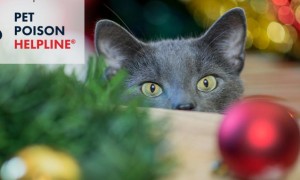Understanding Fading Kitten Syndrome: Causes, Symptoms, and Prevention
Fading Kitten Syndrome (FKS) is a term that refers to the phenomenon where otherwise healthy kittens suddenly decline and die within a few days. This complex condition poses a significant challenge to breeders, rescue organizations, and pet owners alike. Understanding the causes, symptoms, and prevention of FKS can lead to better outcomes for these vulnerable animals and contribute to the overall health of feline populations.
What Is Fading Kitten Syndrome?
Fading Kitten Syndrome is not a specific disease; rather, it is a collection of symptoms that result in the premature death of kittens, typically those younger than eight weeks old. Affected kittens may seem normal at birth but, for various reasons, begin to lose weight, fail to thrive, and eventually fade away. It is a heartbreaking reality for many cat enthusiasts and advocates.
Causes of Fading Kitten Syndrome
The causes of FKS are diverse and can be attributed to genetic, environmental, or infectious factors. Some common contributors include:
-
Infectious Diseases: Kittens are particularly susceptible to various infectious diseases, including panleukopenia (feline distemper), feline leukemia virus (FeLV), and feline immunodeficiency virus (FIV). These diseases can lead to a weakened immune system, making it hard for kittens to thrive.
-
Maternal Issues: If the mother cat suffers from malnutrition, illness, or stress, this can affect her ability to care for her litter. Conditions such as hypothermia, insufficient colostrum production, or lack of maternal instincts can severely impact the health of her kittens.
-
Genetic Factors: Some kittens may be genetically predisposed to health issues that make them more vulnerable to FKS. This can include congenital abnormalities that affect their development.
-
Environmental Factors: Overcrowding, poor sanitation, and lack of warmth can contribute to the risk of FKS. Kittens depend on a stable and clean environment as they grow.
-
Overly Aggressive Littermates: In some cases, one or more kittens may dominate their siblings during nursing, preventing weaker kittens from receiving adequate nutrition and care.
Recognizing Symptoms
Identifying the early signs of FKS is crucial for intervention. Here are some symptoms that caregivers should watch for:
-
Lack of Weight Gain: Kittens should gain weight steadily after birth. Any noticeable failure to gain weight or weight loss is a red flag.
-
Lethargy: If a kitten is less active than its littermates or is not engaging in normal play behavior, it could be a sign of distress.
-
Hypothermia: Kittens are unable to regulate their body temperature effectively. If a kitten feels cold to the touch, it may be at risk.
-
Poor Nursing: Kittens should be nursing vigorously after birth. Difficulty latching onto the mother or lack of interest in nursing indicates problems.
-
Dehydration: Kittens show signs of dehydration, such as dry gums or skin that lacks elasticity.
-
Respiratory Distress: Rapid, labored breathing or abnormal sounds while breathing can also be symptomatic of underlying health issues.
Prevention Strategies
While FKS is complex and often unpredictable, there are proactive measures caregivers can take to mitigate risks:
-
Regular Veterinary Care: Pregnant cats should receive routine veterinary care to monitor health. Vaccinations and parasite control can help reduce the risk of infectious diseases.
-
Nutrition: Feeding the mother a high-quality, well-balanced diet throughout pregnancy and lactation ensures she can provide her kittens with the essential nutrients they need.
-
Clean Environment: Maintaining a clean, warm, and safe environment for the mother and her kittens is crucial. Ensure that the nesting area is free of parasites and pathogens.
-
Monitoring: Closely observe the kittens for any signs of distress or health issues. Early intervention can be life-saving.
-
Limit Stress: Reducing stress in the mother cat can improve the quality of care she provides to her kittens. Creating a calm and quiet space can help in this regard.
-
Socialization and Support: For breeders and rescue organizations, having a network of support can provide additional resources for socializing and caring for kittens, which is essential for their development.
Conclusion
Fading Kitten Syndrome is a tragic reality faced by many responsible breeders and caregivers. Understanding its causes, recognizing symptoms, and implementing prevention strategies can significantly improve the survival rates of vulnerable kittens. By prioritizing the health and well-being of both the mother cat and her kittens, we can work towards reducing the heartbreaking impact of FKS in our feline communities. Educating ourselves and others about FKS is essential, as knowledge and awareness are key to making a difference in the lives of these small, delicate creatures.





